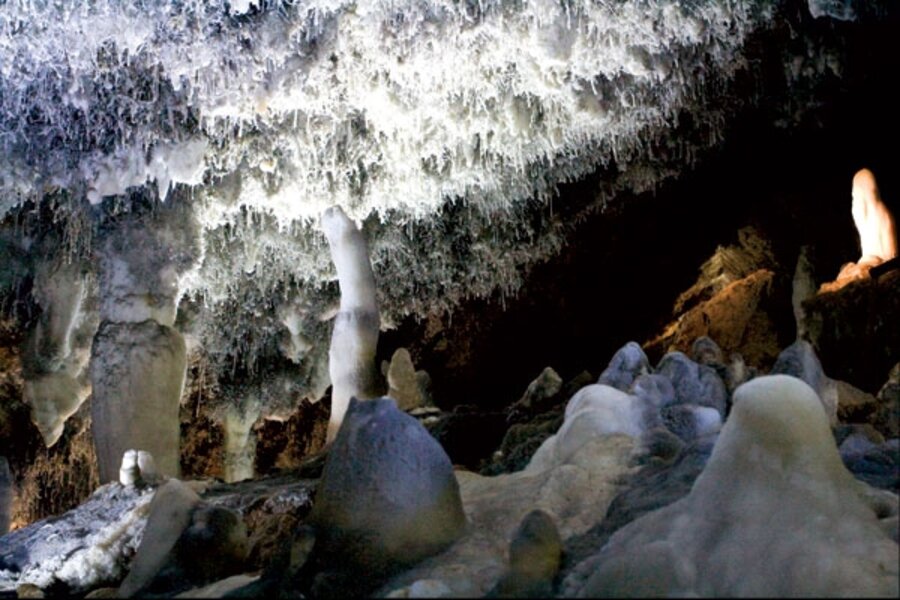Spain: Underground revival
Loading...
• A local, slice-of-life story from a Monitor correspondent.
CANTABRIA, SPAIN – Geologists are undecided whether El Soplao cave should be nicknamed the Sixteenth Chapel or the Cathedral. Either way, it is undeniably one of nature’s best works, stashed deep in the earth’s belly for hundreds of millions of years and now at the forefront of a subterranean economic revival of Cantabria, in northernmost Spain, on the Bay of Biscay.
Eleven miles of underground cavities, rooms, and hallways hold the world’s biggest known treasure of eccentric formations – an infinite array of pure white and transparent limestone structures that seem to defy gravity.
More commonly, stalactites and stalagmites take shape from dripping mineralized water (containing calcium carbonate) that over centuries form columns. Eccentric formations here grow sideways, slanted, or in every tridimensional way they please.
They twirl into springs, needles, nodules, bubbles, even transparent serpentlike sheets that hover from the roof. Scientists are unsure how some of these structures formed, though magnetism from the iron-ore walls is thought to have had something to do with it.
The cave remained undisturbed even after zinc miners discovered it by chance in the middle of the 1800s, using its concert-hall-sized hollows to stash rock. After closing for business in 1979, the cave was reopened to the public in 2005 as part of the local government’s efforts to use its subterranean wealth to attract more tourism.
Ten rooms in the cavern have been declared UNESCO World Heritage Sites, nine of them in the past year, for their assortment of prehistoric cave drawings. Cave tourism has increased 15 percent in the past six months, reaching almost its maximum sustainability levels.
El Soplao’s candidacy as a World Heritage Site in its entirety is also being prepared, by reason of its natural beauty, not its early inhabitants. The government, which at first questioned the tourist-drawing potential of El Soplao, is now planning a huge theme park – underground.
And though explorers found an unprecedented, 75-foot-long pocket of blue amber – amber containing the preserved remains of previously unknown insects from 110 million years ago – they don’t expect a reprise of “Jurassic Park” anytime soon.





